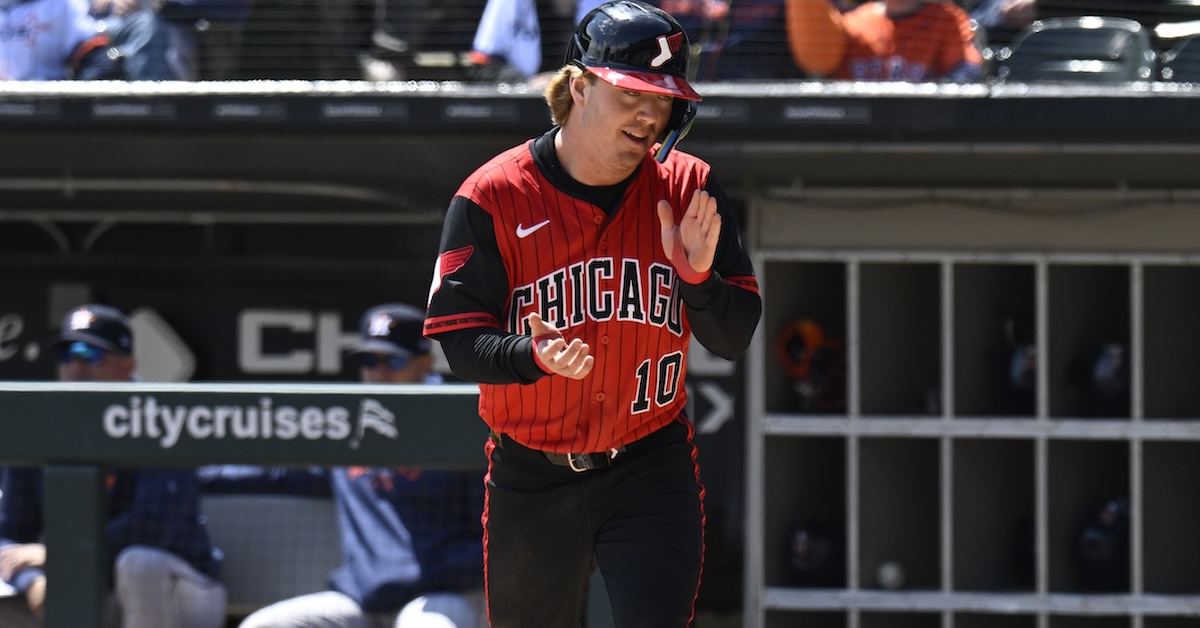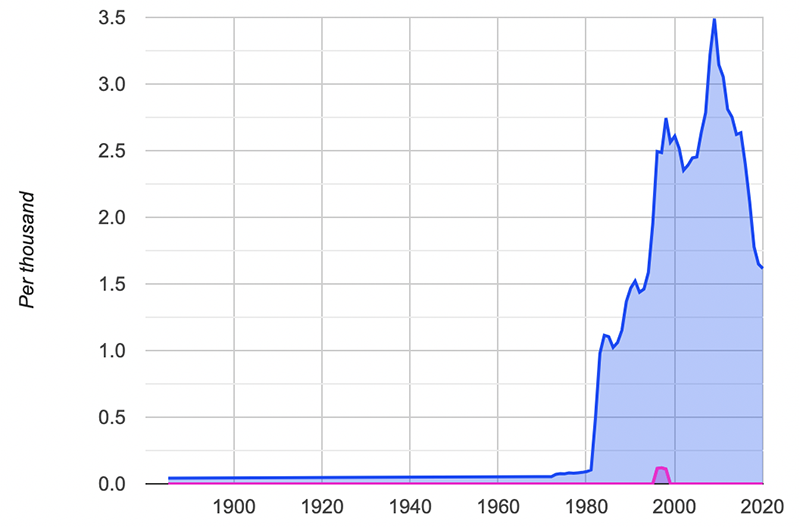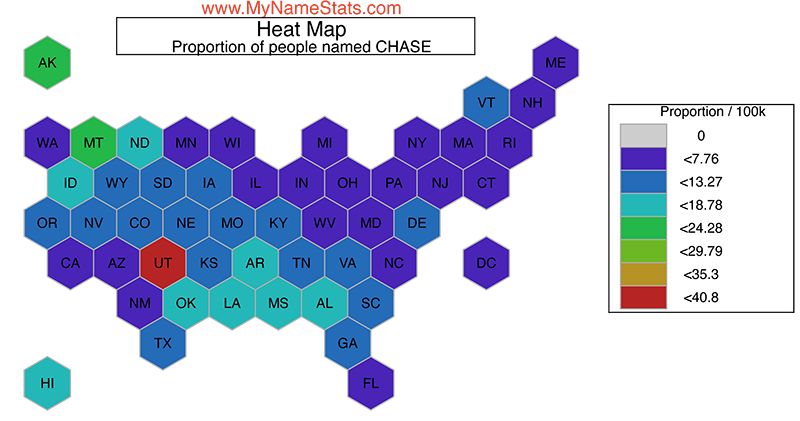On Chasy Chases and Choosy Chases

Yesterday, James Fegan wrote a great story at Sox Machine about how Chase Meidroth became one of the most patient players in baseball. The White Sox want Meidroth to be more aggressive, but after a recent call-up, he’s running a minuscule 17.3% chase rate. He ran that exact same chase rate last season in Triple-A, and it ranked fifth lowest among the 381 players who saw at least 500 pitches outside the zone. Here at FanGraphs, Michael Baumann also covered Meidroth’s overabundance of patience a couple weeks ago. Unsurprisingly, Baumann’s article featured something Fegan’s didn’t: a paragraph about nominative determinism. The defining characteristic of Meidroth’s profile is that he’s a Chase who doesn’t chase. But Meidroth isn’t the only Chase in baseball. Maybe he’s an outlier. Maybe the other players named Chase rack up chases, if only out of a sincere desire to obey the fifth commandment.
Chase Utley was the first major league Chase. He debuted in 2003, conveniently just a year after Sports Info Solutions started tracking pitches. That means that we can track the chase rate of every Chase who’s ever played. I went through his year-by-year chase rates in order to calculate a league-adjusted figure, which we’ll call Chase Rate Plus for the remainder of this article. Utley’s Chase Rate Plus was 88, 12% below the league average, and it helped him run a walk rate that was 6% above the league average. In other words, the first Chase in history didn’t chase much either. What about the rest of the bunch?
| Player | Chase Rate Plus | Walk Rate Plus |
|---|---|---|
| Chase Meidroth | 65 | 198 |
| Chase Utley | 88 | 106 |
| Chase Headley | 87 | 120 |
| Chase d’Arnaud | 121 | 69 |
This is extremely disappointing. Of our four Chases, the only one who has ever lived up to his name is Chase d’Arnaud. Chase Headley chased almost exactly as much as Utley and walked significantly more often. Meidroth’s patience is the reason we’re here in the first place. He’s determined to discover how far you can make it in the majors without ever taking your bat off your shoulder. Luckily, d’Arnaud really did his part. Not only is he the most chase-happy Chase of all time, he’s also the most chase-happy d’Arnaud of all time. His 35.9% career chase rate trounces his brother Travis d’Arnaud’s 27.8% mark. Sure, all the strikeouts and lack of walks that resulted from all those chases likely contributed to Chase’s career being much shorter than his brother’s, but the sibling bragging rights are much more important. In honor of Chase d’Arnaud’s accomplishments, here’s a highlight reel featuring some of his greatest chases.
We can also take some comfort in Hal Chase, the first baseman who played from 1905 to 1919. Over the course of his career, his walk rate was 52% below the league average. He must have really been chasing. We also know that he was chasing paper, as Martin Kohout’s SABR bio of Chase calls him “the most notoriously corrupt player in baseball history.” So maybe he’s not the Chase we should holding up as an example, but on the other hand, he wasn’t a one-trick pony when it came to nominative determinism. His middle name was Homer, and his 57 career home runs did give him an above-average slugging percentage and isolated slugging percentage for the era.
So the batters let us down in a big way. Just a whole bunch of disappointments with excellent plate discipline that helped them be good hitters or whatever. The good news is that there are far more pitchers named Chase than batters. Let’s put our faith in them. So far, we’ve seen nine pitchers named Chase, three of whom made their debuts this season just like Meidroth. We’ve also seen two pitchers named Chasen, and you better believe we’re going to include the gerunds in our sample. How have our 11 Chase(n)s fared?
| Player | Chase Rate Plus | Walk Rate Plus |
|---|---|---|
| Chase Wright | 82 | 144 |
| Chase Lee | 88 | 189 |
| Chase De Jong | 89 | 120 |
| Chase Anderson | 95 | 97 |
| Chase Dollander | 96 | 99 |
| Chase Silseth | 97 | 130 |
| Chase Petty | 103 | 139 |
| Chase Whitley | 110 | 76 |
| Chase Shugart | 116 | 84 |
| Chasen Bradford | 103 | 82 |
| Chasen Shreve | 109 | 130 |
The pitchers aren’t racking up chases either! Our entire sample of nine Chases and two Chasens has a combined Chase Rate Plus of 98. They’re just below average at earning chases, and that number is actually inflated, because our ringers, Chasen Shreve and Chasen Bradford, are propping it up with the third- and fourth-highest marks of the group. Even our position player hero Chase d’Arnaud didn’t earn a single chase when he threw a garbage time inning in 2018.
Look, I knew coming in that there was no particular reason to believe that ballplayers named Chase would either chase more or earn more chases. But I can’t pretend I’m not disappointed. Grammatically speaking, it’s reasonable to read the name as an exhortation, and thus far, most of the Chases we’ve seen at the big league level are not obeying it. They’re not chasing. They’re not earning chases. They’re just putting less chase into the world and it’s sad to see. But I have hope for the future, and it rests mainly on information I gleaned from janky, auto-generated websites.
If you’ve never met anyone named Chase growing up, but you now feel like the name has all of a sudden taken over the baseball world, you’re not alone. Chase is a relatively young name, and it really did come out of nowhere. The Social Security Administration website doesn’t show any record of it until 1972, because it wasn’t among the top 1,000 most popular names for boys until that point. But by 1983, it was in the top 200, and it has remained there ever since. It peaked at 61 in 2009, when 0.348% of boys were named Chase. The graph below comes courtesy of NameTrends.net.

It’s not just that the name has become more popular in recent years. It’s also about where all these Chases are coming from. According to a website called MyNameStats.com, Texas is the state with the most Chases, and the name is generally much more popular in the South. If you’re from the Northeast or Midwest, you’ve probably never met a Chase. They’re not from your neck of the woods. They live where all the baseball players come from. (The name is also wildly popular in Utah, where baby names are slightly different than anywhere else in the country.)

There have only been 13 major league players named Chase. All of them debuted this century, and a quick Baseball Reference search led me to 15 more in the minors right now. It may feel like the name has taken over baseball right now, but just wait a couple years. Eric Longenhagen’s most recent Top 100 Prospects update featured four Chases, highlighted by Colorado’s Chase Dollander, who made his debut a month ago. The Chase explosion is only beginning. We’ll have many more chances to find a Chase who takes the name seriously.
Davy Andrews is a Brooklyn-based musician and a writer at FanGraphs. He can be found on Bluesky @davyandrewsdavy.bsky.social.
Have any of these players been Chastened by their approach?